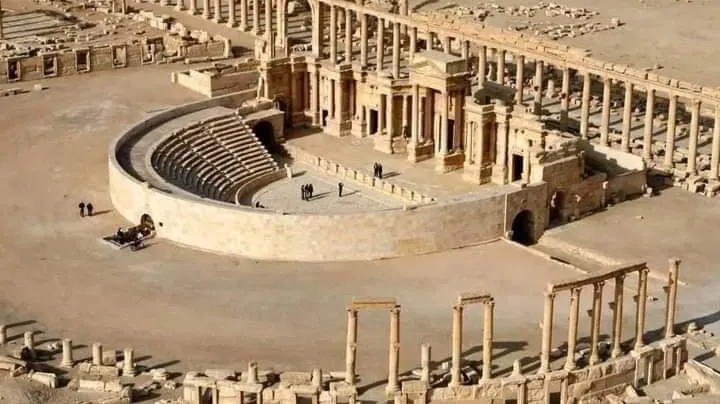Unveiling the Ancient Tapestry: Palmyra’s Dual Identity as “City of Palm Trees” and “Tadmur”

Palmyra, an oasis of history nestled in the embrace of the Syrian desert, beckons with a dual identity that has weathered the sands of time. Known as the “City of Palm Trees,” a title bestowed upon it by its Roman rulers in the 1st century CE, Palmyra’s history unfolds through the layers of its appellations. Yet, beneath this Roman veneer lies the ancient echo of “Tadmur,” “Tadmor,” or “Tudmur” – a pre-Semitic name that continues to resonate through the annals of history.
A testament to the intersection of nature and civilization, Palmyra’s Roman moniker “City of Palm Trees” reflects the picturesque landscape that embraces the city. The Romans, captivated by its verdant charm, honored the oasis with an epithet that encapsulated its natural beauty and fertile surroundings. This title, harkening back to an era when Roman influence flourished, remains a resounding testament to Palmyra’s allure.
Beneath the layers of Roman heritage lies the enigmatic whisper of “Tadmur,” a name that predates the rise of the Semitic languages. Rooted in the city’s pre-Roman past, “Tadmur” serves as a link to civilizations that thrived long before Palmyra’s Roman days. The layers of meaning etched within this ancient name invite speculation and intrigue, hinting at a past where cultures intertwined and languages evolved.
Palmyra’s Enduring Duality: A Convergence of Names
Palmyra’s identity, rich with duality, bridges the gap between its Roman accolade and its pre-Semetic roots. As “City of Palm Trees,” it unveils the Roman admiration for its lush oasis and architectural grandeur. Yet, “Tadmur” stands as a testament to its enduring past, a reflection of the many generations that have walked its dusty streets. This convergence of names mirrors the intricate narrative of a city that has witnessed the passage of empires and the ebb and flow of history.
Strikingly, the ancient name “Tadmur” refuses to fade into obscurity. Echoing across millennia, it has remained in use, a resilient vestige of Palmyra’s distant past. Even as modernity beckons, “Tadmur” stands as a bridge connecting the contemporary world to the antiquity that lies beneath. This continued usage lends an air of timelessness to Palmyra, where the present harmonizes with the echoes of history.
Unraveling the Threads: A Journey Through Palmyra’s History
Palmyra’s tapestry, woven with threads of Roman legacy and pre-Semetic origins, invites historians, archaeologists, and enthusiasts on a journey through time. The city’s dual identity embodies the complexity of human civilization, where names become more than labels; they encapsulate stories of conquest, cultural exchange, and the indomitable spirit of a city that endures.
In a world that rushes forward, Palmyra stands as a poignant reminder of the past’s enduring influence on the present. As “City of Palm Trees” and “Tadmur” intersect, the very essence of the city transcends its geographical boundaries. It beckons us to pause and listen to the whispers of history, reminding us that within Palmyra’s embrace lies the legacy of a place where civilizations converged, where palm trees rustled in the wind, and where the sands of time preserved the echoes of antiquity.
